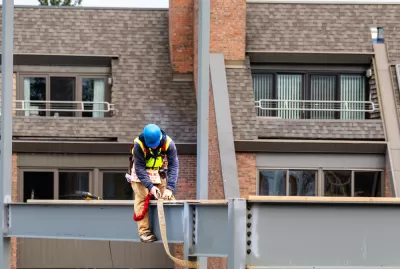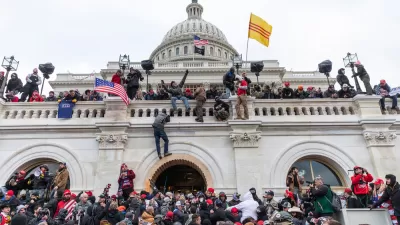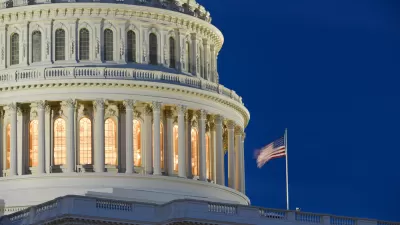The potential of the Infrastructure Investment and Jobs Act is most unrealized as the federal government mobilizes the details of the $1.2 trillion bill. President Joe Biden signed the bill in November 2021.

Writing for Route Fifty, Kery Murakami checks in with the Infrastructure Investment and Jobs Act (IIJA), a year after the historic $1.2 trillion bill was approved by Congress and signed into law by President Joe Biden. On one hand, reports Kurakami, local officials tout the bill’s potential to improve long-neglected infrastructure around the country. On the other hand, “changes are needed to help with the rollout of all the new funding, including speeding up permitting for transportation projects and making it simpler for local governments to apply for the grants,” writes Murakami.
The article digs specifically into some of the specific details of permitting requirements, especially under the National Environmental Policy Act (NEPA). The IIJA made tangible changes to the NEPA process, including a requirement for “federal agencies to consider the ‘indirect’ and ‘cumulative’ environmental effects of projects and not just the direct ones.” Republicans will try to undo those changes, reports Murkami. The IIJA also added the One Federal Decision, “which requires federal agencies to coordinate their environmental reviews.”
Sources cited in the article include U.S. Senator Ben Cardin (D-Maryland); U.S. Senator Kevin Cramer (R-North Dakota); Jim Willox, chairman of the Converse County Commission in Wyoming; Michael Carroll, deputy managing director of the Philadelphia Office of Transportation and Infrastructure Systems; and Jacob Day, mayor of Salisbury, Maryland.
While the article also mentions a few specific programs funded by the IIJA, like Buy America requirements, $5 billion to install electric vehicle charging infrastructure, and the Transportation Alternatives program (doubled by the IIJA), most of details of implementation remain conceptual, and have yet to materialize in tangible, built projects.
FULL STORY: The Infrastructure Law, One Year In

Planetizen Federal Action Tracker
A weekly monitor of how Trump’s orders and actions are impacting planners and planning in America.

Map: Where Senate Republicans Want to Sell Your Public Lands
For public land advocates, the Senate Republicans’ proposal to sell millions of acres of public land in the West is “the biggest fight of their careers.”

Restaurant Patios Were a Pandemic Win — Why Were They so Hard to Keep?
Social distancing requirements and changes in travel patterns prompted cities to pilot new uses for street and sidewalk space. Then it got complicated.

California Homeless Arrests, Citations Spike After Ruling
An investigation reveals that anti-homeless actions increased up to 500% after Grants Pass v. Johnson — even in cities claiming no policy change.

Albuquerque Route 66 Motels Become Affordable Housing
A $4 million city fund is incentivizing developers to breathe new life into derelict midcentury motels.

DC Area County Eliminates Bus Fares
Montgomery County joins a growing trend of making transit free.
Urban Design for Planners 1: Software Tools
This six-course series explores essential urban design concepts using open source software and equips planners with the tools they need to participate fully in the urban design process.
Planning for Universal Design
Learn the tools for implementing Universal Design in planning regulations.
Heyer Gruel & Associates PA
JM Goldson LLC
Custer County Colorado
City of Camden Redevelopment Agency
City of Astoria
Transportation Research & Education Center (TREC) at Portland State University
Camden Redevelopment Agency
City of Claremont
Municipality of Princeton (NJ)





























